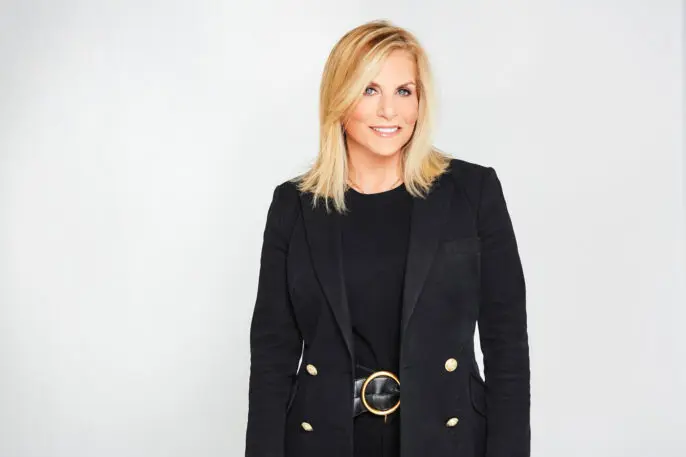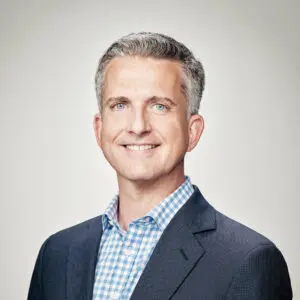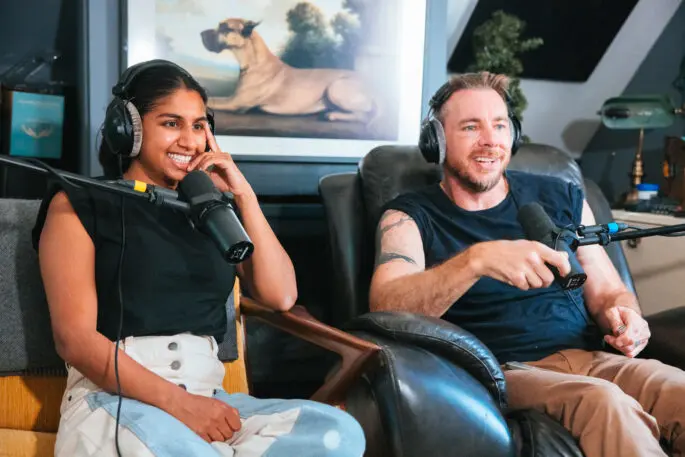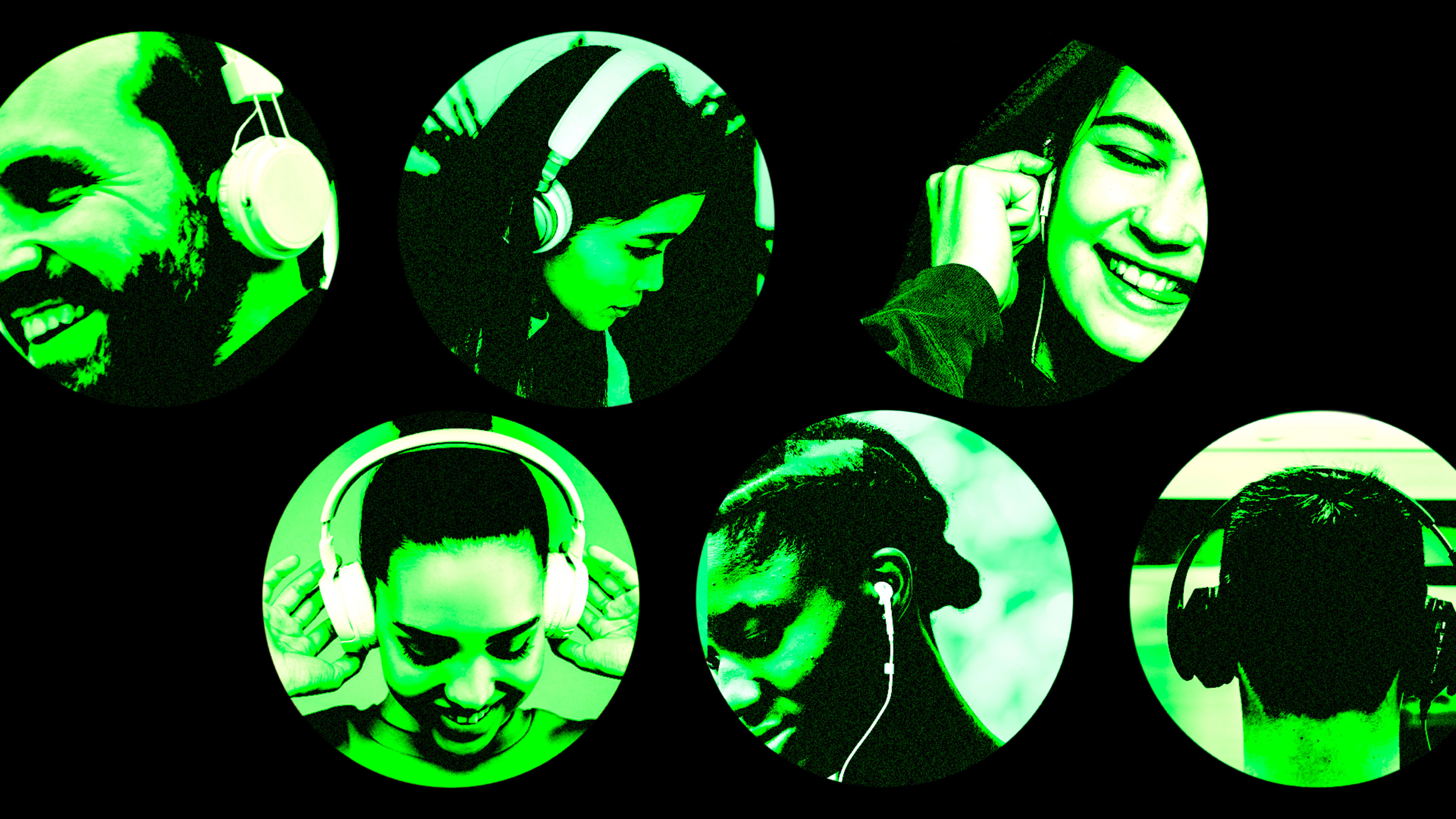Earlier this week, Spotify dropped some culture-rattling news: J.J. Abrams’s production company Bad Robot will now be creating podcasts for the streaming platform in an exclusive, first-look deal. It’s the kind of announcement observers have come to expect from Spotify, whose foray into podcasting has been defined by splashy content deals with the likes of Joe Rogan, Dax Shepard (via his popular Armchair Expert podcast), Michelle Obama, and The Ringer, Bill Simmons’s sports media empire that Spotify bought for over $250 million in 2020.
Spotify’s chief content and advertising business officer, Dawn Ostroff, tells Fast Company that the deal with Abrams, the writer-director behind Cloverfield, Alias, Star Wars: Episode IX, and many other films and series, is “testament to how we’re continuing to invest in premium content and be in business with the most popular creators in the world.” As for Abrams, he’s a “storyteller who has an incredibly adventurous side when it comes to trying new things.”

Spotify’s gains were highlighted in its third-quarter earnings report in late October, when it revealed that 3.2 million figure, as well as the fact that advertising revenue from podcasts helped drive total ad revenue up 75% year over year. Stockholm-based Spotify is now on track to pass 1 billion euros (more than $1 billion) in ad revenue for the first time this year. Even more noteworthy, founder and CEO Daniel Ek stated, “We recently became the No. 1 podcast platform U.S. listeners use the most.” The claim was based on survey data conducted by Edison Research, which asked a sample of more than 8,000 weekly podcast consumers in the second quarter: “What platform or service do you use most to listen to podcasts?” Spotify clocked in first with 24% of weekly podcast consumers, beating out its foremost rival, Apple, which came in next with 21% of podcast listeners. YouTube accounted for 18% of the pie.
The milestone for Spotify doesn’t mean victory over Apple is quite a fait accompli. Data from eMarketer suggests that when it comes to monthly active users in the U.S., Spotify is on track to overtake Apple, albeit narrowly, by the end of the year with 28.2 million to Apple’s 28 million. According to Podtrac, Apple still receives far more monthly podcast downloads than Spotify as opposed to streams. But Spotify’s rapid growth shows how it is poised to dominate an industry whose own growth has gone into hyperdrive thanks to the pandemic—41% of Americans listen to at least one podcast a month today, compared to 25% three years ago—and, in the process, redefine it.
As Spotify steadily acquires audio content companies and distributors (such as Anchor and Gimlet, which it bought in 2019 for $340 million), and pushes out new features like live audio, paid subscription, video, polls, and other modes of personalization and interactivity, the company is setting out to become not only the biggest podcast platform in the world, but also the most transformative. Indeed, the company likes to say it is investing not just in podcasts but in “future formats of audio.” And it’s doing this at a speed that Ek says is an integral part of the plan. During the earnings call, he repeatedly invoked the term velocity to describe the company’s audio strategy.
“Why does velocity matter so much to Spotify? Because I believe that it will ultimately determine our long-term success,” he said. “If you are slow, you better be right most of the time. But if you are fast, you can test and iterate more, which creates a culture of innovation.”
When I talk to Simmons, he echoes this sentiment. “At Spotify, everyone has the same objective, which is, how do we become the biggest in audio? Something like Greenroom [Spotify’s live audio feature], as it was explained to me, was like, ‘Is this the [next big] thing? We don’t know. But if it does become a huge thing and we’re not there, how are we the leader of audio? We have to be there.’ So we try to figure it out.”
Access to the Greenroom
Figuring out Greenroom is an apt window into how Spotify invests in new formats as it tries to woo more creators and listeners alike. Last March, Spotify acquired Betty Labs, the creators of Locker Room, a sports-focused, live-audio app that allows users to set up a Twitter Spaces-like environment where they can listen, raise their hand (virtually) to speak, or type comments. The sessions can also be repurposed afterward as a traditional podcast.

“If we have time and we can edit something, I’m always going to think the podcast will win,” he continues. “On the other hand, if you have an awards show, like the Oscars, and it ends, people want to talk about it. They want to hear smart people talk about it right away. That’s where Greenroom comes in. Last week there was a huge MMA card, and we have [sports journalists] Ariel Helwani and Chuck [Mindenhall] and Petesy [Carroll] and the card ended and they were going, like, ‘What’d you think? What happened? Who won?’ That’s, for me, where the live audio becomes really interesting.”
Pivot to video
By far the biggest format push at Spotify right now is video, a medium that the company has experimented with over the years in a series of starts and stops. There was a series of video originals that the company commissioned and then scrapped back in 2017. But there is the feeling that users are now ready for video content, particularly as “the pandemic has driven people to adopt new means of creation,” says Mike Mignano, senior director of the creation platform at Spotify. “Lots of us are on video platforms a lot now, which has lent itself to recording video podcasts.”
Video is also a way for Spotify to lean into its younger demographic, a generation that has grown up on digital video, and capitalize on a format that propelled Rogan, Spotify’s biggest in-house name, to social-media superstardom. The controversial MMA enthusiast had racked up 10 million followers on YouTube, where his clips often went viral. But even as he migrated his audio audience over to Spotify after his May 2020 deal—according to The Verge, in 2019 Rogan racked up 200 million downloads a month—his full-episode videos remained on YouTube until last December, when they, too, became exclusive to the streaming platform.
Ostroff says that Rogan was “the prototype and the inspiration” for Spotify’s push into video. “Joe had a significant amount of his audience who was not only listening to him as a podcast but watching as well. So as part of our deal, as an experiment, we said, ‘Okay, let’s prepare ourselves and the platform for video and let’s use Joe as our example. And we saw a tremendous amount of the audience watching the podcast on Spotify in addition to listening to it. The numbers were significant.” (Fans have been less pleased. They say YouTube was more “convenient” to watch than Spotify, and miss the ability to comment.)
Video is still being rolled out to creators at Spotify, and there has been some grumbling about the slow pace, since the feature was announced more than a year ago. Ostroff insists that it’s still in beta mode, and that “it’s very important to make sure we get the tech right. Our goal is to have thousands of creators on the platform now in video, and that will be significantly expanding next year in a meaningful way.”
Going on offense in advertising
Spotify’s advertising push has been just as aggressive—and fast—as what it’s doing on the content side, and Ostroff practically chirps when she cites how podcast ads are pushing the company’s overall revenue beyond where it’s typically been. This growth will help offset the drag that podcasts still are on gross margins, given how much money Spotify has been shelling out to acquire platforms, studios, and exclusive rights. But the company insists that podcasts drive overall growth because of the engagement they foster, which keeps users on the service.
The spike in ad revenue comes on the heels of a succession of initiatives, like the introduction of streaming ad insertion; the acquisition of the podcast-ad firm Megaphone; and the rollout of the Spotify Audience Network, which allows advertisers to buy spots that target an audience rather than just a specific show. Spotify says that the number of podcasts in the network has grown by more than 50% since it launched, and that nearly one in five Spotify advertisers are participating. The push into video will open up more ad opportunities—and, more important, higher CPMs—for both Spotify and creators.
Ostroff says new advertising isn’t happening just in the U.S., as Spotify moves into new territories globally, all of which have helped push its total user number to 381 million. In France, for example, the number of podcasts created on Spotify grew 75% year over year, and listeners in that country spiked 89%. To fuel this further, Spotify is taking a Netflix-like approach and adapting local content for English-speaking audiences. Following the success of a sci-fi podcast in Chile called Caso 63, Spotify is now reproducing the show for U.S. and other English-speaking territories. “We don’t literally translate the podcast word for word,” Ostroff says, “but we make changes so cultural references are relevant to any given market or country. We’ve done that with a lot of our Parcast podcasts that have traveled and done very well in other markets.”
Owning the conversation

That brand halo effect is driven by individuals like Rogan, Simmons, Shepard—and now Abrams—and Ostroff says there’s no plan to slow down when it comes to investing in tentpole brands, even as the company simultaneously courts lesser-known creators by giving them more tools to set up shop and start streaming an audio show.

Also pleasing, she says, is that their audience remains intact. “Spotify has 381 million monthly active users,” she says. “They have 3.2 million podcasts. It’s just cool to be part of that family and part of the growth of it. Podcasting, it’s so weird to say, it’s still kind of relatively new and everyone is just figuring it out. I think Spotify knows what they’re doing, and it’s cool to be in their hands. We feel safe there.”
Recognize your brand’s excellence by applying to this year’s Brands That Matter Awards before the early-rate deadline, May 3.
